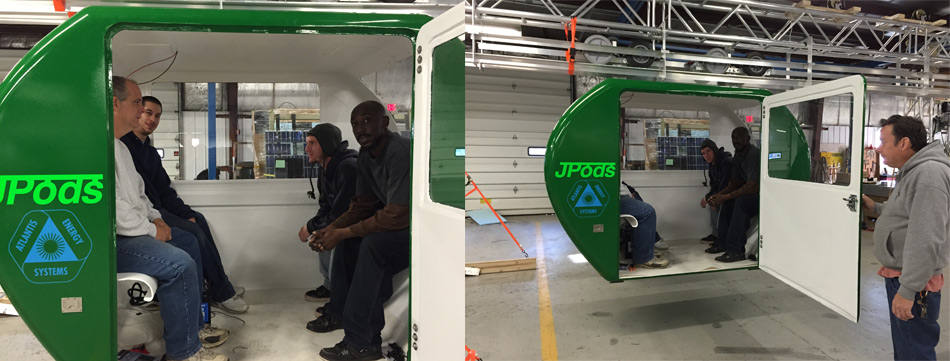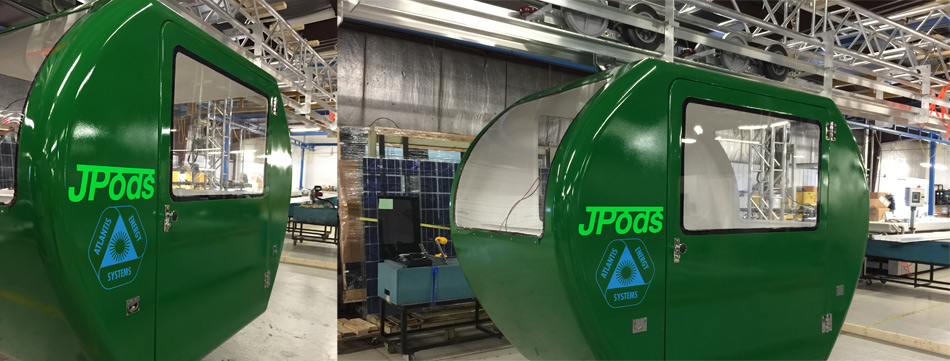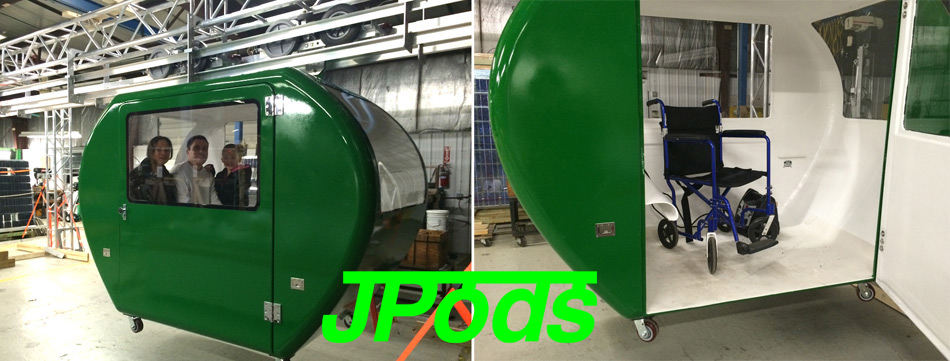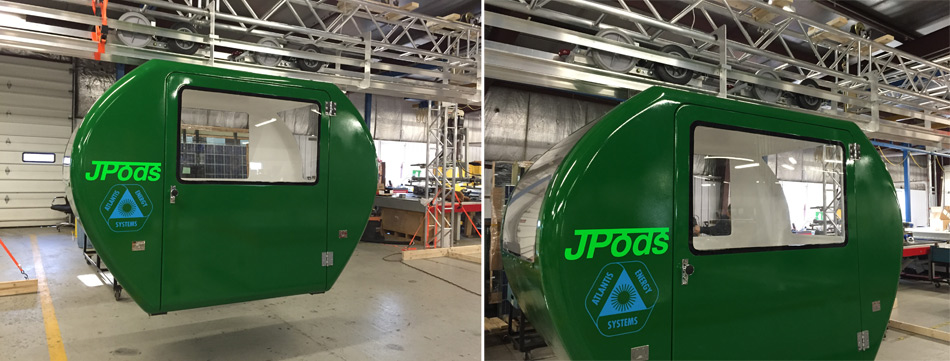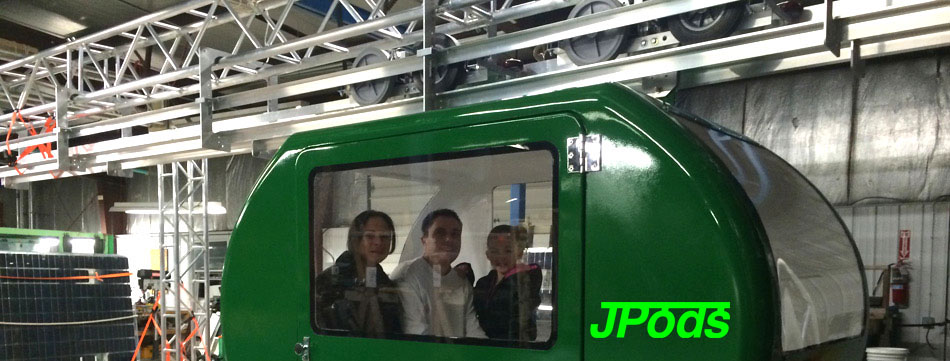Build a Solar Mobility Network in your City
Objective: Convert 50% of the $1.7 trillion/year traffic costs Americans into jobs, customer savings and profits by implementing JPods Patent 6,810,817:
- Networks of self-driving cars: #1 “A method of controlling a transportation System for moving people, freight, and any combination whereof using a distributed network of intelligent devices without requiring the aid of a human driver”
- Solar-powered mobility networks: #10 “The method… providing… Solar and wind power generators integrated into the physical Structure of Said transportation System….”
JPods approach is to “start small, iterate relentlessly”. Our primary initial niche is networking airport economic communities of terminals to hotels to car rental to parking to convention centers. Networks will grow based on achieving 10X benefits. Red Bull TV documentary on the future of transportation
- World Cup 2026 Proposals
- JPods Texas
- Massachusetts Mobility Company
- Georgia Mobility Company
- Maryland Mobility Company
- Queens Mobility Company
- Arizona Mobility Company
- Missouri Mobility Company
- San Jose Mobility Company
- Tulsa Mobility Company
- … every city, every state, and every nation.
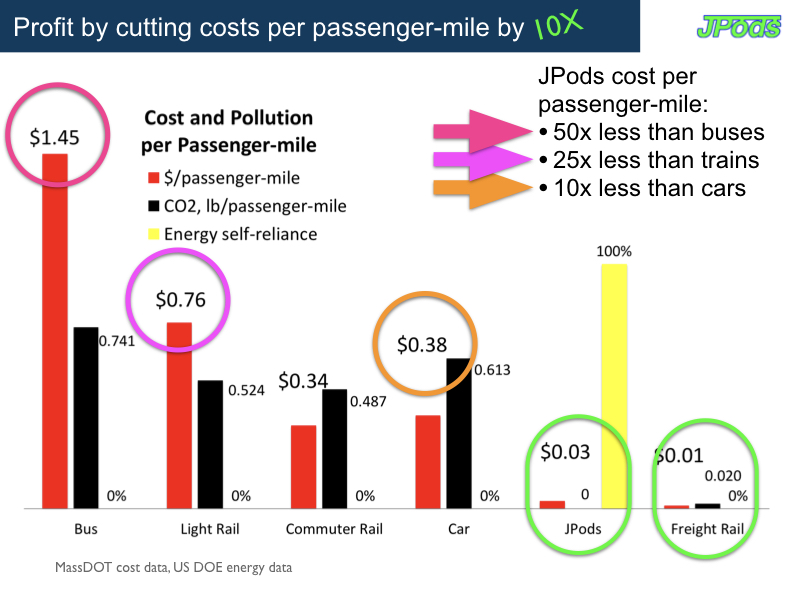
Those who can document their efforts to get the Performance Standard Law adopted in their community can earn equity in the Local Mobility Company that owns the network in their community.
JPods’ business model is to build networks and sell them to Local Mobility Companies (LMC) to own and operate. We guess there will be an LMC for every 100,000 people in major cities and one for most smaller towns.
Economic Development:
- Millions of jobs were created digitizing communications; replacing rotary telephones and the analog network with digital devices on digital networks.
- Millions of jobs will be created digitizing mobility; replacing the 25 mpg efficiency of the Model-T with digital vehicles on digital, solar-powered networks:
- Existing Costs:
- Federal Highway Administration estimates 13,000 job-years are created per $billion of infrastructure spending.
- The American Society of Civil Engineers grades US highways a “D” with a cost of $2,042 billion (26.5 million job-years) to fix.
- Traffic costs Americans about $1.7 trillion per year.
- Retooling to solar-powered digital networks
- Roughly $5 trillion to build 500,000 miles (4 times the miles of freight railroads and 1/4 the lane miles of urban roads), or 65 million job-years.
- Convert more than $1 trillion per year of current traffic costs in jobs and profits.
- Existing Costs:
Market Size:
Our guess at the need in the US is 500,000 miles in the next 15 years. This is based on:
- 4 times the amount of freight railroads. There are 140,000 miles of freight railroads in the US. These average 476 ton-miles per gallon and willl be the logistical arteries in the next oil supply crisis. Our guess is about 4 times this much JPods and other podcar networks will be required to be the logistical capilaries.
- 1/4th the lane-miles of urban roads. There are nearly 2 million lane-miles of urban roads in the US the energy to power is becoming ever less affordable to people. Our guess is that bicycles, walking, and other lifestyle choices are 75% of the solution for moving people. Moving logistics in a city will still require payloads beyond the capacity of bicyles of 1200 pounds.
Background documents
- ROI Engine
- Spreadsheet video and link
- A_Secaucus Law 2014-23, Performance Standards. This law applies to transport infrastructure the frame work that ended the century of rotary telephones in communications. It restore transport infrastructure to free markets.
- B_2004-A2031_NJ Legislature Law Directing the Study of PRT. This law is vividly clear in its instructions to NJDOT:
As new technologies have been made viable, the State has benefited from being an early adopter….
It is in the State’s economic interest to investigate new types of service which may improve the usefulness and integration of existing platforms, provide fast, inexpensive travel options, reduce capital costs of projects, and reduce pollution from motor vehicle travel. Personal Rapid Transit (PRT)….
According to the Federal Transit Administration, average capital cost per twoway mile for heavy rail is $150 million, and for light rail is $70 million. For operating cost per passenger mile: heavy rail is $1.20, light rail is $1.80….
The transportation system of New Jersey may benefit greatly from fostering a niche role for profitably managed rapid transit as a supplement to its current system. It is in the State’s interest to consider the integration of PRT into its transportation system
NJDOT is equal clear in it disregard for both NJ 2004-A2031 and Secaucus Ordinance 2014-23 as stated on Dec 18, 2014:
Dick Dube provided me with your latest e-mail marketing your JPOD Personal Rapid Transit (PRT) system. The NJDOT has reviewed PRT systems in the past and concluded that there is currently no practical application for these types of systems on either State or Interstate highways.
Joseph D. Bertoni
Deputy Commissioner
- C_NJ’s $13.5 Billion per Year Gasoline Costs
- D_NHTSA_$871 Billion per Year Cost of Traffic Accidents, $14.4 Billion per Year in NJ
- E_Report NJDOT on the $8.6 Billion per Year Cost of Congestion
- F_Constitutional Basis for Restoring Free Markets to Transport Infrastructure
- G_Mayor of Morgantown Letter on the Effectiveness of the PRT Network in Morgantown
- H_SenateLetter on PRT as the Solution to the 1973 Oil Embargo
- I_7503_Congressional Office of Technology Assessment Study PB-244854 on PRT as the Solution to the 1973 Oil Embargo
- J_WVU PRT Benefit Cost Report_2010
- K_New Jersey Legislature Study by BAH 070515
Economic Development documents
Help design the networks by:
- Clicking on a map to vote for where you want stations.
- Learn to design networks in SketchUp.
- Understand network components.
In 2007 the New Jersey Department of Transportation commisioned a study titled “Viability of Personal Rapid Transit In New Jersey“. The study concluded SDL365 has the potential to provide a higher level of personal mobility than comparable transit modes at a potentially reduced capital and operating cost. It also holds the promise of being potentially more energy efficient, less land consumptive and more environmentally responsible while improving the overall service, speed and attractiveness of public transportation. The study also identified the need for sustained political support to allow for the development and placement of such a unique mode of transportation.
The first phase of building a JPods network in Secaucus will consist of erecting a small section of guideway, about 100 ft long. This length of track will be used to refine mechanical aspects of a full size network.
The second phase of building the JPods network will consist of building a larger section of guideway, about 300 yards. The section of guideway will be built to commercial use standards.

It will be above grade and will cross over an automobile right-of-way. The guideway will be covered with a solar canopy, capble of providing clean energy to the system. The main purpose of this section of track will be to prove out the cost per mile of laying down guideway. The section of guideway will also be used to showcase the technology to other cities.
The third phase will consist of extending the 1/4 mile guideway to 3 miles, connecting the Frank R. Lautenberg Rail Station at Secaucus Junction to the Meadowlands sports Complex. Along the way, there will be many stations, essentially making most point-to-point transits within the town less than 15 minutes. This inlcudes walking to and from the stations. We have created an interactive map, where you can help the city determine the locations of future stations.
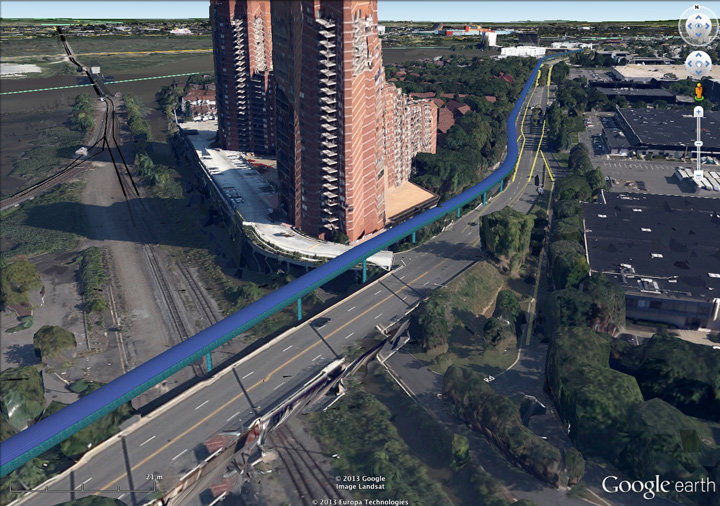
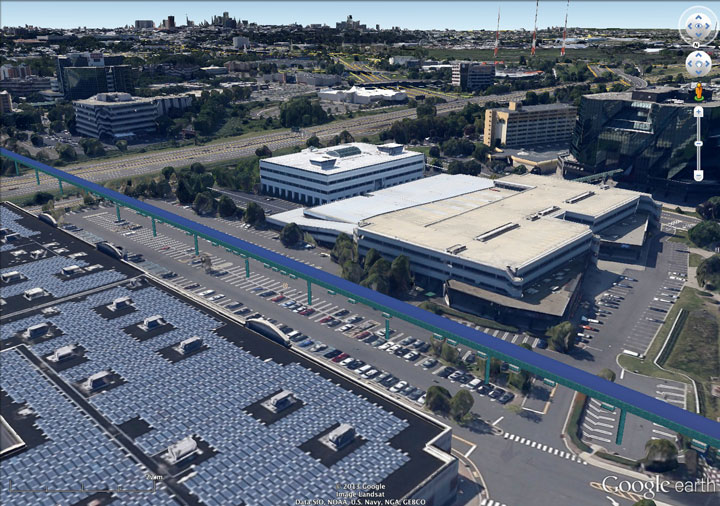
As Automated Guideway travel becomes ubiquitous with Secaucus NJ, it will become the hub for an expanded network reaching out to other parts of New Jersey and New York. The video below shows how JPods might be used to cross the George Washington Bridge.


